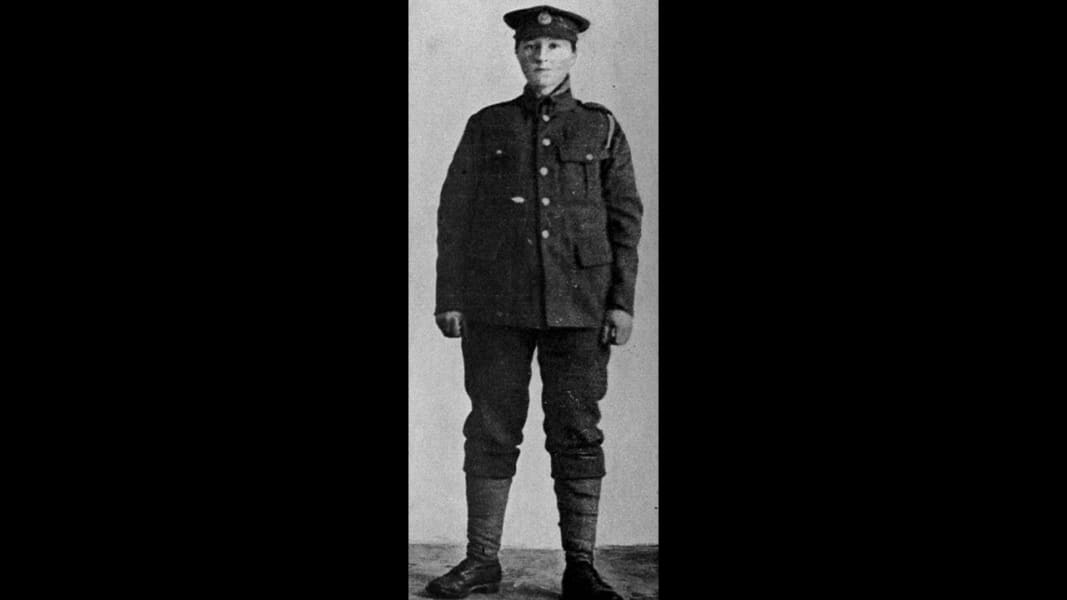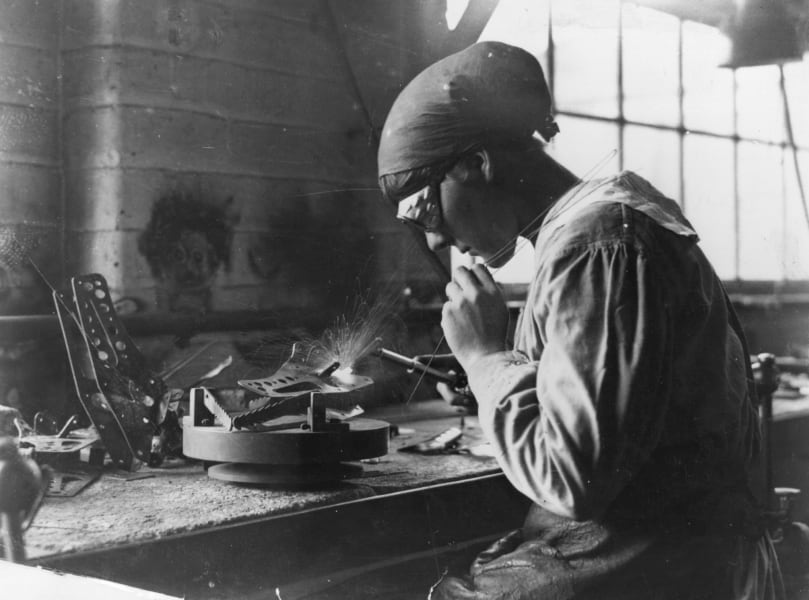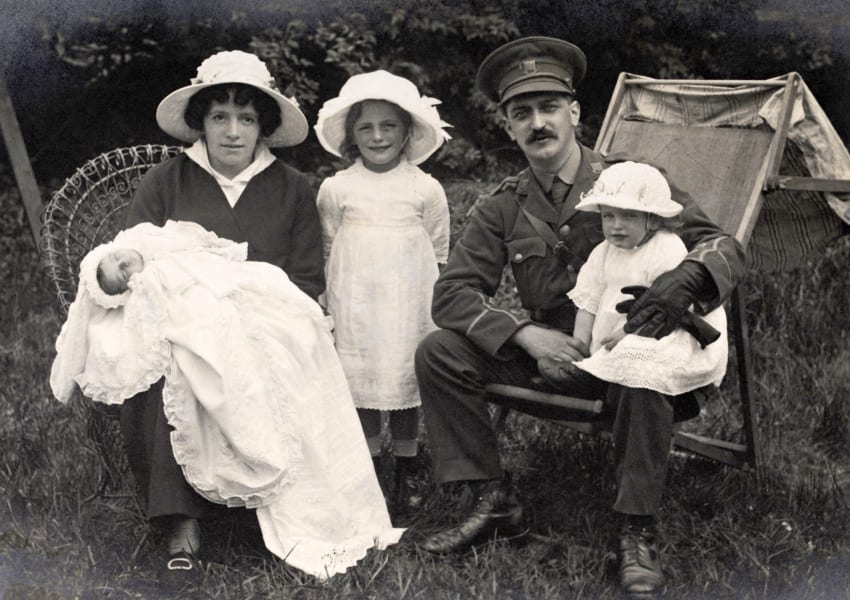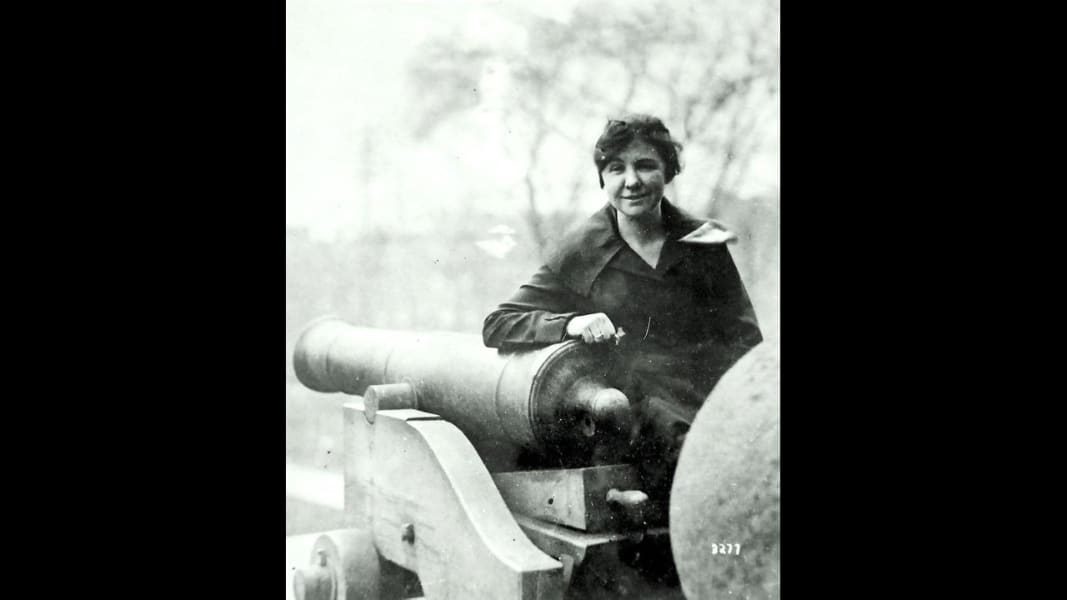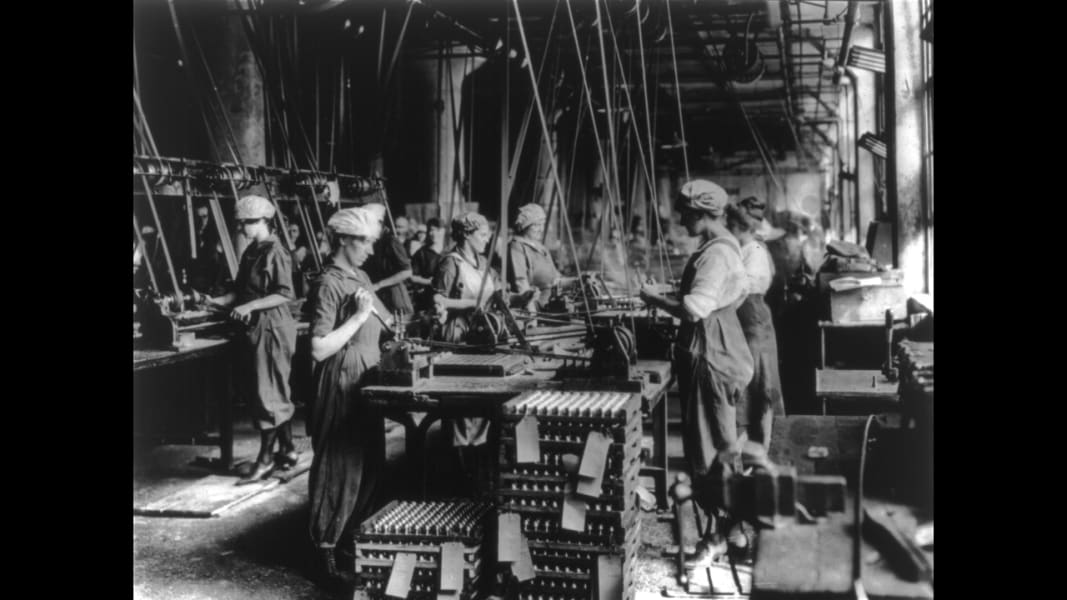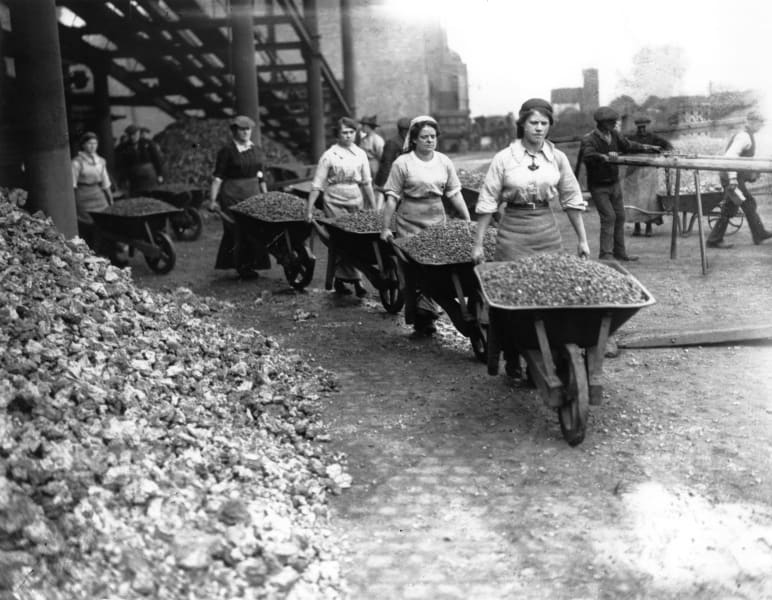Share
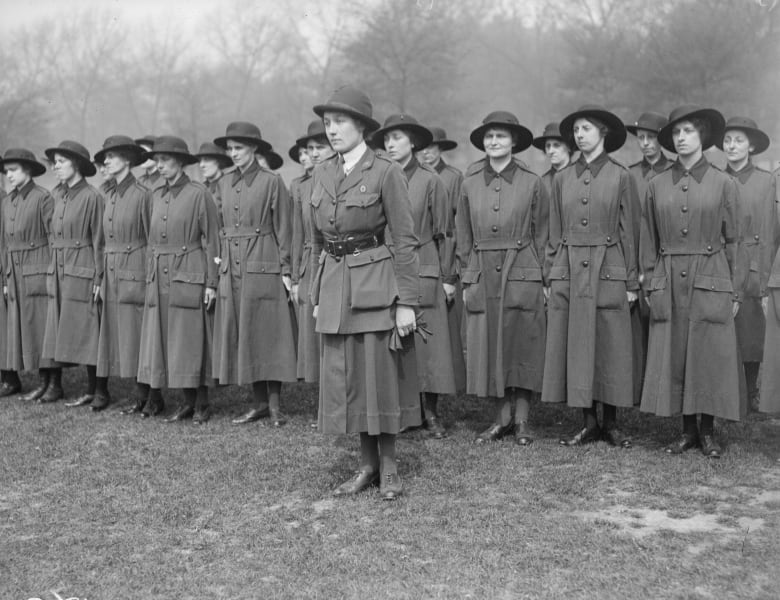

1 of 20
Female army recruits from the United Kingdom are seen during drills in May 1917. World War I broke down barriers between military and civilian life. With the men away in battle, women took on an extraordinary role in support of the war, whether it was on the front lines or at home in factories and farms. Topical Press Agency/Getty Images
Loretta Perfectus Walsh enlisted in the United States Naval Reserve in March 1917, becoming the first active-duty woman in the Navy and the first U.S. military woman who wasn't a nurse.
Women work at the Gray & Davis Co. ordnance factory in Cambridge, Massachusetts. Munitions workers faced harsh working conditions that were sometimes lethal, such as in the Barnbow National Factory explosion that killed 35 near Leeds, England. Library of Congress
A woman works as a porter at the Marylebone station in London. British propaganda posters declaring soldiers' dependence on female munitions workers gave women a sense that their labor contributions would be important -- and acknowledged. But this was not always the case. Topical Press Agency/Getty Images
A Russian women's regiment from Petrograd (now St. Petersburg) relaxes in front of its tents. Women across the globe would serve directly on the battlefields, with many serving as nurses, ambulance drivers and cooks. Library of Congress
Maria Bochkareva, nicknamed Yashka, was a Russian soldier who in 1917 created the 1st Russian Women's Battalion of Death -- an all-female combat unit. Library of Congress
"Hello Girls" at work. The U.S. Army trained more than 400 female telephone operators to serve in France and England for the Army Signal Corps. These women were bilingual, speaking French and English. US Army
Grace Banker receives a Distinguished Medal of Service for her role as chief operator in the U.S. Army Signal Corps. She worked at a post close to the front lines in France. AKeen
Female firefighters put a fire escape into position in the United Kingdom. Topical Press Agency/Getty Images
Lenah Higbee, a Canadian-born U.S. Navy chief nurse, served as superintendent of the U.S. Navy Nurse Corps during World War I. She was the first female recipient of the Navy Cross. US Navy
Nurses tend to wounded soldiers in France in 1915. Maurice-Louis Branger/Roger Viollet/Getty Images
Julia Stimson was superintendent of the U.S. Army Nurse Corps and the first woman to attain the rank of major in the Army. She earned the Distinguished Service Medal for her service in France. Library of Congress
Mairi Chisholm and Elsie Knocker drive an ambulance in July 1917. The two British women ran a first-aid post in Belgium only 100 yards from the trenches. Lt. Ernest Brooks/ IWM via Getty Images
Milunka Savic was a Serbian combatant and the most decorated female fighter in the history of warfare. She was honored by multiple countries for her bravery.
Mary Sophia Allen inspects policewomen in London in May 1915. Before the war, Allen had been imprisoned three times for her activism as a suffragette. She turned down an offer of wartime service with a Needlework Guild to become the second in command of the Women Police Service. Museum of London/Heritage Images/Getty Images
A member of the Women's Forestry Corps, part of the Women's Land Army in the United Kingdom, works circa 1916. Horace Nicholls/ IWM via Getty Images
Women "navvies" work on railway building in Coventry, England. Central Press/Getty Images
Dorothy Lawrence disguised herself as a man in order to become an English soldier in World War I.
A female munitions worker welds at an armaments factory. Hulton Archive/Getty Images
A British Army lieutenant sits in a garden with his wife and three children while on leave during the war. In Great Britain and the United States, women confronted wartime shortages of food, fuel and housing as they struggled to maintain homes and families while they also worked outside the home. Popperfoto/Getty Images
